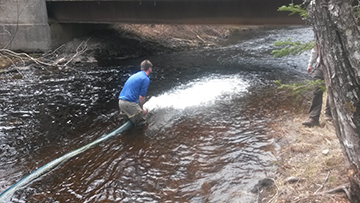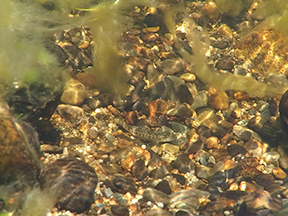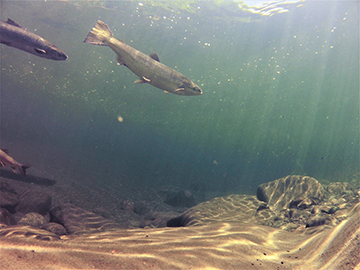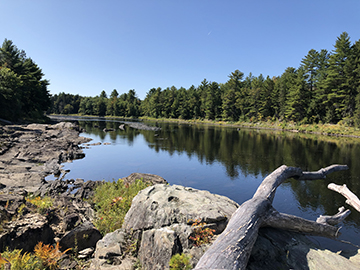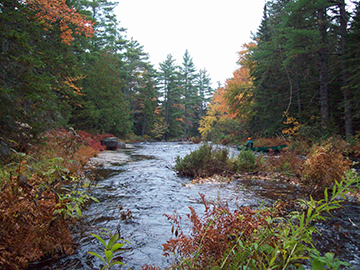Rebuilding Maine's heritage with a new partnership for conservation
Salmon for Maine's Rivers is an exciting new collaboration led by the Maine Department of Marine Resources that unites partners to help bring the iconic Atlantic salmon from the brink of extinction and rebuild a piece of Maine's heritage.
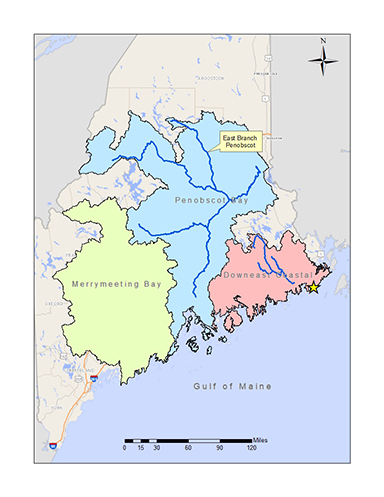 |
Maine's native Atlantic salmon is critically endangered and bold actions are required to prevent extinction. The Atlantic salmon was once considered the "king of fish" in New England. It is estimated that somewhere between 300,000 and 500,000 Atlantic salmon made annual spawning migrations to the rivers of New York and New England, with 100,000 returning to the Penobscot River alone. Dams, log drives, pollution, and overfishing combined to bring Atlantic salmon to the brink of extinction. Recently, poor survival in the ocean has made the problem worse: the only remaining naturally spawning Atlantic salmon in the United States return to just eight rivers in the Gulf of Maine. Collectively, the salmon in Maine's rivers make up the Gulf of Maine Distinct Population Segment (DPS), which has been listed as Endangered under the US Endangered Species Act since 2000. |
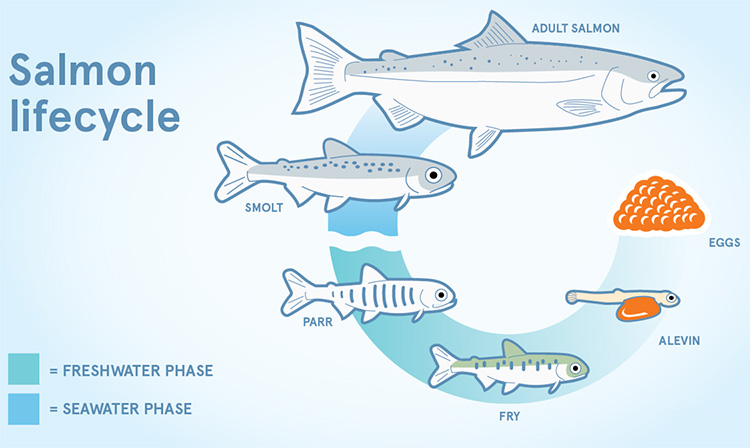 |
From the Mountains to the Ocean Atlantic salmon are one of Maine's Sea Run Fish Species. This means they need access to clean, cool river habitat for reproduction and early growth and access to a healthy ocean ecosystem to complete their life cycle. When conditions are good, just two of the 7500 eggs laid by a large female salmon will survive to adulthood. |
|
Releasing Atlantic Salmon Smolts into the Narraguagus River |
Conservation Hatcheries: Saving Salmon from Extinction Over the last 20 years, conservation hatcheries have played a key role in preventing extinction and maintaining genetic diversity for Gulf of Maine Atlantic salmon. In conservation hatcheries, salmon are bred in captivity and their offspring are released into rivers at the egg, fry, parr and smolt stages. In the wild, small salmon face predation, limited food, and other stressors that leave only a few salmon, the fittest, to survive their first few years. By holding salmon in hatcheries during their early life, they have ready access to food, are protected from predation, and survive at much higher numbers than they would in the wild. These hatchery-raised juvenile salmon are released to supplement Maine's critically low wild populations. |
|
It should come as no surprise that salmon that grow up in the wild, know better how to survive in the wild. Photo credit: NOAA Fisheries |
Moving Beyond Hatcheries Hatcheries have prevented Atlantic salmon from disappearing from Maine's rivers completely but spending early life in the river is important: salmon that grow up in a natural environment survive at higher rates than salmon released from hatcheries. |
|
By raising Maine Atlantic salmon in saltwater until they are mature adults, Maine DMR and partners expect to increase the numbers of adult salmon reproducing in our rivers and build a stronger future for Atlantic salmon in Maine. |
|
|
Photo courtesy of Casey Clark, Maine DMR |
One of the best ways to help Atlantic salmon move towards recovery is to have more adults spawning in rivers. The problem is that survival of Atlantic salmon in the ocean is very low. For every 1,000 smolts that leave the Penobscot River for the ocean, only 5 will survive to return to the river as adults. To help meet recovery goals, Maine DMR and partners transferred endangered Gulf of Maine Atlantic salmon smolts to a land-based saltwater facility at University of Maine in 2021. These salmon are being fed and cared for until they mature as adults. The mature adults will be released into high quality habitat in their river of origin to reproduce in the fall of 2022 and 2023. Allowing the salmon smolts to grow to maturity in the safety of the saltwater rearing facility allows them to escape the currently high mortality at sea. The offspring of adults raised at the saltwater rearing facility will hatch from eggs in the river and experience the natural environment from birth to death. This will allow us to increase the number of naturally reared salmon that will count toward meeting recovery criteria. This program is based on an approach being successfully implemented by the Fundy Salmon Recovery program in New Brunswick, Canada and is designed to help rebuild salmon populations in two of our key salmon rivers: the East Branch Penobscot and Machias. |
|
East Branch Penobscot River - Photo Credit: Danielle Frechette, Maine DMR |
|
|
Machias River - Photo Credit Colby Bruchs, Maine DMR |
|
